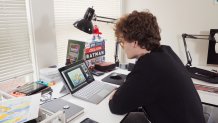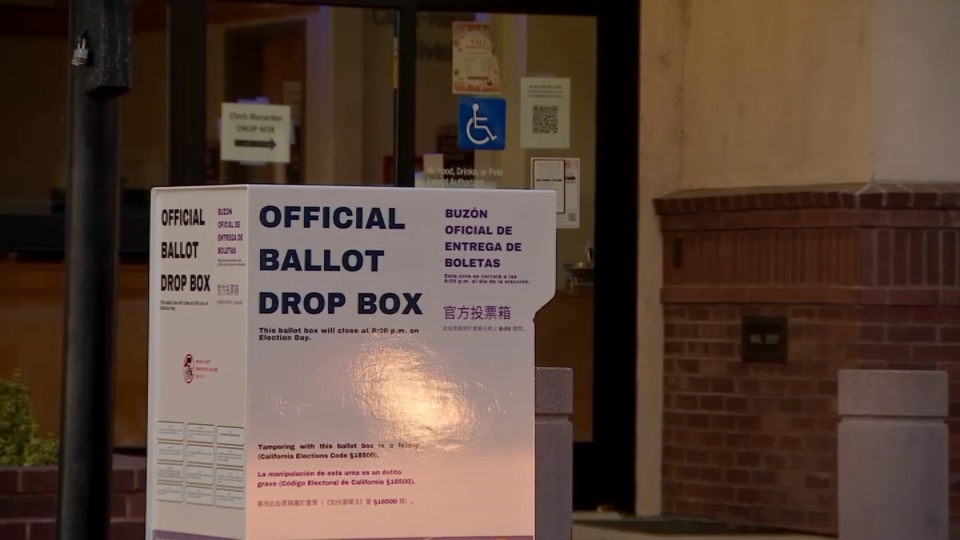What to Know
- Academy of Art is among the many California colleges and universities that plan to teach the remainder of their spring 2020 classes online
- Many art and design classes include hands-on labs and interactive critique sessions that are hard to replicate in the digital domain
- Because it also offers online degree programs, Academy of Art has a library of online teaching tools that instructors of in-person classes can now draw on as they transition to a world of file sharing and video chat
As he doodles on his iPad in a downtown dorm room he shares with two other students, Max Pinelli is living out a lifelong dream.
"It kind of started when I was a kid," he explained. "I really liked Sonic the Hedgehog as a kid, and I would draw him and show him at show-and-tell."
Max never stopped drawing, and now as a third-year student at the Academy of Art, he's well on his way to the bachelor's degree he hopes will launch his career in comic books and graphic novels. The journey's had plenty of twists and turns, including what may be the biggest curveball yet: stay-at-home orders that have prompted colleges and universities across California to close their classrooms.
Max Pinelli and his two roommates will return from spring break to this 3-person Academy of Art dorm room, where they’ll take classes remotely, living shoulder-to-shoulder. Many students opted to continue living in dorms because they’re equipped with fast internet and drawing tables, or to limit contact with family members who are at high risk for COVID-19 complications.
"The transition was kind of strange," Pinelli said of the sudden announcement. "It seems that for the foreseeable future this semester, (classes) will be online."
Local
Instructors were equally caught off guard. Chuck Pyle, who teaches the illustration class Max is currently taking, recalled his reaction about as colorfully as you'd expect from a prolific cartoonist.
"Five minutes of hysterical laughter. Five minutes of panic," he said.
Get a weekly recap of the latest San Francisco Bay Area housing news. Sign up for NBC Bay Area’s Housing Deconstructed newsletter.
Illustrator Chuck Pyle’s home studio in Petaluma is filled with doodles and inspiration. He’ll be teaching his undergraduate Academy of Art classes remotely from this space for the rest of the spring semester.
Though it may have appeared abrupt, Academy of Art administrators would argue that the school was practically born ready for this moment.
"In fact, I would argue we were probably the most prepared (among art and design schools)," said chief academic officer Sue Rowley.
As far back as two decades ago, the Academy of Art began laying out a plan to offer online degree programs, giving students an alternative to taking traditional classes while paying San Francisco's sky-high rent. The school built a three-camera television studio on campus and began inviting faculty to record short instructional videos.
"We have spent close to 15 years building an independent, free-standing, art school oriented way of teaching art online, across all of our majors," Pyle said.
Now, as in-person classes move online to slow the spread of the coronavirus, Pyle said he can draw on that library of how-to videos to help fill the 40-mile gap between his home studio in Petaluma and the students attending his class remotely from dorm rooms and apartments in San Francisco.
"If we were just trying to start (putting learning materials online) right now, it would be next to impossible," Rowley said.

For students working in traditional media like ink and watercolor, the move to digital classes has provided a teachable moment. They now need to learn how to capture high-quality photographs of their work to submit it online — a skill Pyle said they'll also need as professional illustrators.
"I haven't seen an art director face-to-face in well over a decade," Pyle said. "Everyone delivers things digitally."
Amid the adjustments and inconveniences, students and teachers are quickly finding an upside. Using screen sharing and a digital whiteboard tool within the Zoom video call environment, art critiques take on a whole new dimension. Instead of simply talking about a student's artwork, Pyle can electronically draw his suggestions right on top of it.
"It's instantaneous. I can actually give a deeper, more meaningful critique of any sketch at any stage, and in a much more condensed timeframe," he said. "I think it will even end up transforming how we teach our on-site classes once this is behind us, because it has many options for a more exploratory way of teaching things in real time."
For students who need them, the Academy of Art has set up design workstations in the lobbies of some dormitory buildings. They’re arranged far apart, to allow students to practice social distancing as they continue their coursework in areas like game development that require specialized computer hardware.
In some ways, the move to online classes was even more seamless in the School of Game Development, where students already use digital drawing tools, and frequently chat with classmates using Discord, a gaming-focused communication platform.
"Everything we do is digital, so if they have to draw or paint, it's in all Photoshop, it's all in those programs," said the school's executive director, David Goodwine.
But much like illustration students, game development students don't always have the creative tools they need when they're away from campus. While some members of Pyle's class left their watercolors and brushes locked up in classroom buildings and had to scramble to order more, game development students often rely on powerful PCs and expensive digital design tablets like the ones found in the Academy's computer labs.
For students who've decided to remain in the dorms — and as of spring break, that's 86% of them, though the number changes daily — the Academy set up digital design workstations in residence hall lobbies, spaced at least six feet apart. In some cases, they're sending equipment home with students who've decided to leave San Francisco for the rest of the semester.
"Even with everything going on, we still have to do our best," said 3D game art student Annabel Hartmann.
 Courtesy of Chuck Pyle
Courtesy of Chuck PyleFor instructors, teaching at a distance is no substitute for the real thing, Pyle said. He relies a lot on non-verbal cues to gauge how students are taking his feedback.
"When I see them on camera, I see them from (the chest) up," he said. " I can't see the fidgeting hand, I can't see the clenching of a body."
But he's found solace in the extra time he gets to spend in his studio — and in bed.
"I sleep in a bit more in the morning, candidly," he said. "I don't have to commute from Sonoma County to San Francisco."



